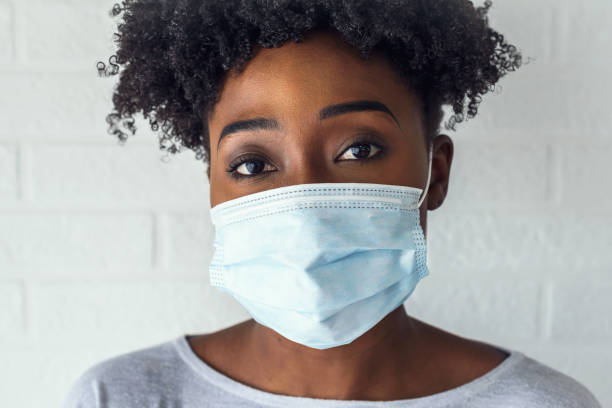
Systemic inequality and institutional racism are great contributors to the high number of African American deaths during the Coronavirus pandemic. Prior to the COVID-19 pandemic, many Black families were already struggling. Many in these communities lived in poverty, with issues related to housing and food insecurity, as well as many medical conditions that could be coined “pathologies of inequality” such as high rates of maternal death and low birth weights, high rates of asthma, obesity, and diabetes and less of access to quality medical care. These communities went into the coronavirus pandemic underserved and under resourced.
The guidelines for avoiding COVID-19 include staying home from work if you are not well, stocking up on supplies, and avoiding contact with people who are sick. These are challenging under the best of circumstances, and they can be even more difficult for low-income earners, a category way too many people of color find themselves in. African American and Hispanic workers are more likely to work in lower-paid, consumer-facing service jobs that simply do not allow them to work remotely. A 2019 Pew Research study found that 10% of Americans — nearly 33 million people — are living without home internet service; 26% of white and 38% of black households lack a broadband connection at home. For those families without internet, home schooling and telecommuting are not options.
Cities are COVID-19 Hotspots
 COVID-19 is an urban disease that spreads most efficiently in crowded populations and areas. Crowded public transit systems allow for the close human contact needed to spread the virus. Highrise and tightly packed housing and group living quarters (nursing homes and prisons) allow for accelerated transmission, disproportionately affecting older adults, people with compromised health, and often people of color. Though it is easy to make the assumptions that people of color are more likely to live in cities, that does not entirely account for the increased prevalence of death from COVID-19 that we see in communities of color. The Brookings Institution looked at numbers from the 2010 to 2014 American Community Survey and found that 3% of African Americans live in the suburbs, 36% live in cities, 15% live in small metropolitan areas, and 10% live in rural communities. But of those cities that have been COVID-19 hotspots, many have disproportionately high populations of people of color.
COVID-19 is an urban disease that spreads most efficiently in crowded populations and areas. Crowded public transit systems allow for the close human contact needed to spread the virus. Highrise and tightly packed housing and group living quarters (nursing homes and prisons) allow for accelerated transmission, disproportionately affecting older adults, people with compromised health, and often people of color. Though it is easy to make the assumptions that people of color are more likely to live in cities, that does not entirely account for the increased prevalence of death from COVID-19 that we see in communities of color. The Brookings Institution looked at numbers from the 2010 to 2014 American Community Survey and found that 3% of African Americans live in the suburbs, 36% live in cities, 15% live in small metropolitan areas, and 10% live in rural communities. But of those cities that have been COVID-19 hotspots, many have disproportionately high populations of people of color.
Distrust of Government
 Urban environments with high crime rates have put in place highly restrictive curfews that suburban residents are not subjected to. Citizens in these communities are threatened with fines and jail time if they are non-compliant with social distancing expectations. In communities with no reliable history of seeing law enforcement officers or government officials as sources of assistance, these restrictions create an environment of stress, anxiety, and distrust. Further exacerbating the problem, black men have reported being stopped in stores by police for wearing personal protective equipment (PPE). Although masks should signal health precaution, to some, it signals potential criminal behavior, especially if a person is a black male. It might be hard to trust that the same people are acting in their best interest when they are giving them public health advice.
Urban environments with high crime rates have put in place highly restrictive curfews that suburban residents are not subjected to. Citizens in these communities are threatened with fines and jail time if they are non-compliant with social distancing expectations. In communities with no reliable history of seeing law enforcement officers or government officials as sources of assistance, these restrictions create an environment of stress, anxiety, and distrust. Further exacerbating the problem, black men have reported being stopped in stores by police for wearing personal protective equipment (PPE). Although masks should signal health precaution, to some, it signals potential criminal behavior, especially if a person is a black male. It might be hard to trust that the same people are acting in their best interest when they are giving them public health advice.
Prior Health Conditions
 People with underlying comorbidities are more likely to succumb to illness and die. These comorbidities are heart disease, diabetes and pulmonary issues. African Americans have higher rates of diabetes, high blood pressure, hypertension, obesity and asthma; conditions that have been collectively referred to as pathologies of inequality. This is one of the reasons that African Americans are more likely to die from COVID-19.
People with underlying comorbidities are more likely to succumb to illness and die. These comorbidities are heart disease, diabetes and pulmonary issues. African Americans have higher rates of diabetes, high blood pressure, hypertension, obesity and asthma; conditions that have been collectively referred to as pathologies of inequality. This is one of the reasons that African Americans are more likely to die from COVID-19.
What is Not Being Said Matters
 The discussion in the mainstream media often stops here. The real question is why so many African Americans and Hispanics live in overcrowded environments, distrust the government, are employed by low-wage jobs, lack the resources needed for telecommuting, and are, as a result, in generally poorer health than their white counterparts. Structural racism is the core issue that is now leaving an entire group of Americans more susceptible to a viral epidemic.
The discussion in the mainstream media often stops here. The real question is why so many African Americans and Hispanics live in overcrowded environments, distrust the government, are employed by low-wage jobs, lack the resources needed for telecommuting, and are, as a result, in generally poorer health than their white counterparts. Structural racism is the core issue that is now leaving an entire group of Americans more susceptible to a viral epidemic.
Americans are taught to believe that personal responsibility and choices are the single most important determinant in our lives. This bias often prevents us from seeing the way systems are created and perpetuated to limit our choices so significantly, that it is insulting to call them choices at all. For the media not to call the disparity of COVID-19 deaths in communities of color by its name (RACISM) is continuing to support the false narrative that black and brown people are responsible for the choices they made that left them vulnerable to COVID-19.
 Public policy doesn’t need to just look at healthcare access, housing policies, and worker protections, they need to address the reality that the policies are implemented in way that perpetuates systemic racism. It is heartening to see that social determinants of health are now being discussed on a national level, but this is not a new issue and it is certainly not a secret; there has been consistent research that illustrates the role racism plays in creating poor health in minorities. When we do not look beyond superficial explanations that focus on personal “choices” as having a causal role in racial health disparities, we perpetuate a destructive and racist narrative. When we discuss the why behind the disproportionate number of minorities affected by COVID-19, do not accept the answer “minorities are more likely to live in the city.” In light of COVID-19, we have seen firsthand the role that state and federal government response, public policies, and the speed of political action absolutely matter. These decisions directly impact citizen’s health, life, and even death, for better or worse. And they always have.
Public policy doesn’t need to just look at healthcare access, housing policies, and worker protections, they need to address the reality that the policies are implemented in way that perpetuates systemic racism. It is heartening to see that social determinants of health are now being discussed on a national level, but this is not a new issue and it is certainly not a secret; there has been consistent research that illustrates the role racism plays in creating poor health in minorities. When we do not look beyond superficial explanations that focus on personal “choices” as having a causal role in racial health disparities, we perpetuate a destructive and racist narrative. When we discuss the why behind the disproportionate number of minorities affected by COVID-19, do not accept the answer “minorities are more likely to live in the city.” In light of COVID-19, we have seen firsthand the role that state and federal government response, public policies, and the speed of political action absolutely matter. These decisions directly impact citizen’s health, life, and even death, for better or worse. And they always have.





Join the Conversation